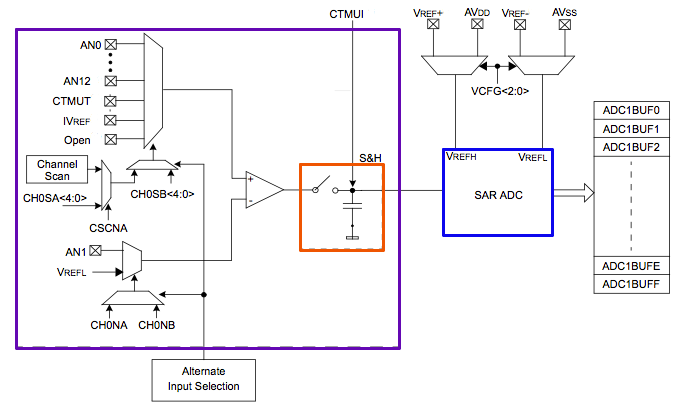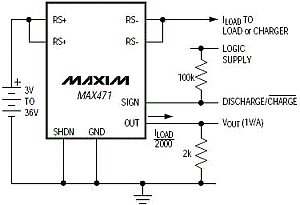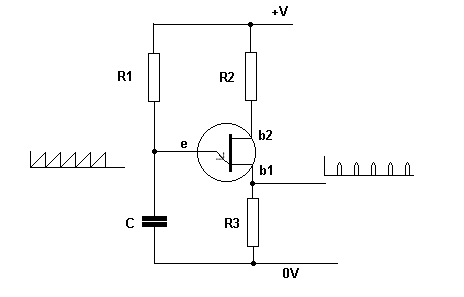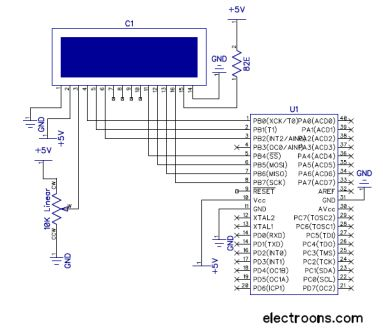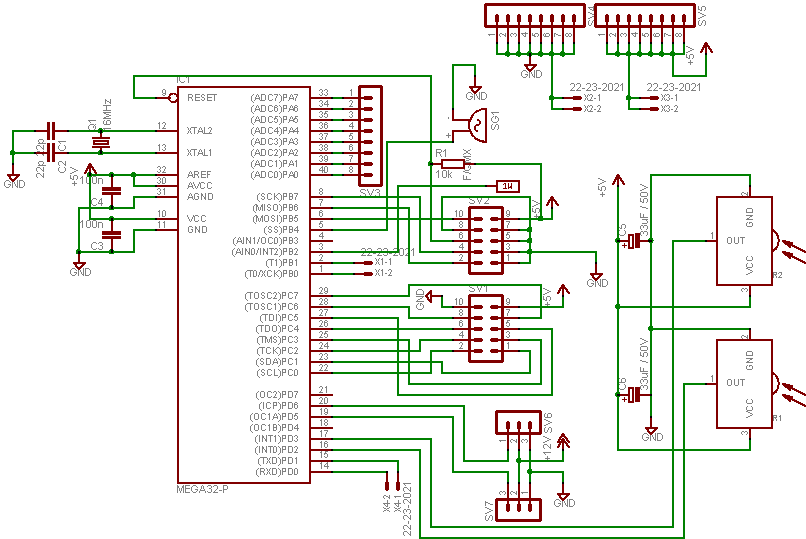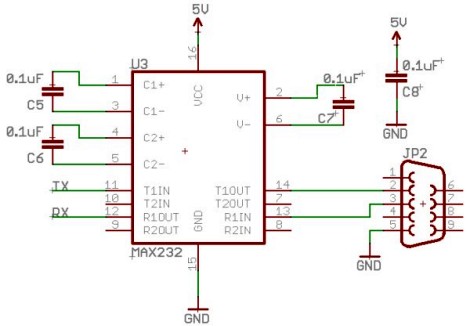
NE-555 Tutorials
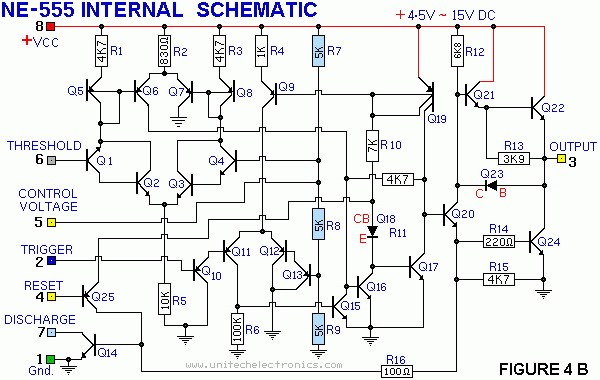
Following the development of the original 4-pin OM802 timer IC by SIGNETICS ITT - GEMINI in 1969/1970, a new and innovative integrated circuit known as the NE-555 timer IC was introduced to the market in May 1971 by Signetics Corporation. This company was later acquired by Philips Semiconductor, which is now part of NXP Semiconductor. The NE-555, often referred to as the "triple-five," became widely recognized as "The Ubiquitous Timer Chip" and was the first mass-produced commercially available timer IC. Its design team could not have anticipated the immense popularity and longevity of this chip, which has maintained consistent sales for nearly five decades. As of August 2011, it remains in high demand within the electronics industry, forty years after its initial release.
Regarding military specifications, it is generally overlooked that Mil. Spec. chips are fundamentally similar to standard chips but have a stricter Acceptable Quality Level (AQL). In a batch of 100 chips, for instance, 99% may pass all functionality tests, while 1% may exhibit minor issues and do not meet the stringent AQL, allowing them to be sold as standard commercial chips. It is possible to purchase a batch of 500 NE-555 chips and conduct comprehensive testing on each one to verify their functionality according to the data sheet specifications. This involves "burning in" each chip at its maximum recommended supply voltage over an extended period, using specialized test equipment that can be quite costly.
It is important to note that testing a small sample of 100 chips from a larger batch may suggest compliance with the manufacturer's specifications. However, achieving this level of testing requires precision equipment, high-stability power supplies, and extensive resources. Additionally, it is unrealistic to expect identical performance across all chips in a batch, as variations in manufacturing may result in some chips performing better than others. This reality dispels the notion that manufacturers create special chips with enhanced features for military specifications.
The NE-555 is typically supplied in a plastic package, with the earlier round metal-can "T-05" package being largely phased out in favor of the more cost-effective 8-pin Dual In-Line Package (DIP). The NE-556 is a dual version of the NE-555, housed in a standard 14-pin DIP, containing two NE-555 timers. The NE-558, a quad version, includes four distinct NE-555 timers within a single 14-pin DIP package, although it has been scheduled for discontinuation.
The NE-555 timer IC operates in various modes, including astable, monostable, and bistable configurations, making it highly versatile for applications in timing, pulse generation, and oscillator circuits. The internal architecture consists of two voltage comparators, a flip-flop, and a discharge transistor, allowing it to produce precise timing intervals and control output signals effectively. The widespread adoption of the NE-555 can be attributed to its robustness, ease of use, and adaptability across a wide range of electronic applications, from simple hobbyist circuits to complex industrial systems. Its legacy continues to influence the design of timer circuits and integrated circuit development in the electronics industry.Following in the footsteps of the "primitive" but quite successful 4 pin OM802 timer IC manufactured by the original SIGNETICS ITT - GEMINI chip fabrication plants way back in 1969 / 1970, a new and very innovative I. C. known as the " NE-555 " timer I. C. was released to the market, being introduced around May 1971 by the then Signetics Corporation , later to be taken over by Philips Semiconductor, then more recently, NXP SEMICONDUCTOR, as a division of Philips. It then became commonly known as "triple-five", the NE-555 / SE-555 which we all know today as the "The Ubiquitous Timer chip" and it was also the very first mass-produced commercially produced timer IC available at that time.
The design team could not have realised how sought after this chip was and I am sure many of you reading this will agree, it is without a doubt, the most useful " chip concept " that has endured the past almost two decades of consistent sales and what product shelf life it has had ! No one could have realised back in 1970, just how brilliantly successful it would be, lasting well over 25 years and manufactured by so many companies even today in May 1996and it is very much in demand by the " electronics Industry " today in August 2011, some 40 years later.
While on the subject of MIL. SPEC. or Military Specification, it is generally not realised that Mil. Spec. chips are basically the same as any other chip, however their AQL or Acceptable Quality Level is tightened right down and the permissible errors in a sample 100% tested batch are virtually zero, that is to say, in say a batch of 100 chips, 99% passed with flying colours and 1% is a "bit suss" and pass all basic functionality tests however they do not meet the 100% AQL and therefore can be safely sold as garden variety commercial chips. Having said that, one can purchase a batch of, say 500 pieces of NE-555 chips and test every single chip, one chip at a time for all the correct parameters "per the data sheet".
This will ensure that each and every chip is fully functional, have each chip "burned in" at its maximum recommended supply voltage, perhaps overnight or a week, on a specific "test bed" and see how many pass or fail, the passes "could" basically be classed as "Mil. Spec". The strange thing is, if only 100 are tested from a batch of, say 500, this would perhaps strongly indicate a compliance to the manufacturer`s data sheet specifications or better.
To do this, requires a great deal of precision test equipment, special high stability power supplies and a host of test equipment costing thousands of dollars! Also, Having noted that, it would be safe to say that certain chips in that control batch of a mere 100 chips could actually perform a small percentage better than others in the batch, it would be unreasonable not to expect this result from a quantity of only 100 pcs of mass manufactured NE-555 chips or in fact any other type of semiconductor manufactured these days.
This however dispels the myth and story that manufacturers make special chips, manufactured with extra bits or thicker substrate, thicker attaching wires, increased substrate pads areas and so on, to special specifications, calling them MIL. SPEC. It simply is not so. The NE-555, in figure 1 (above) is supplied in a plastic package. It is believed that the round metal-can called the ` T-05 ` package or the "tin-can" is no longer available in favour of the more familiar and cheaper to produce 8-pin DIP "Dual IN-Line plastic" package.
About 20 or so years ago the "T-05" metal-can type was very much the standard with the early SE-555 and NE-555 types. The NE-556 timer is a dual version of the NE-555 and comes in a standard 14-pin DIP plastic package, with two NE - 555 timers within.
The NE-558 was a quad version of the NE-555 with four distinct NE-555`s within the one package, incidentally in a 14 pin DIP case, however it was scheduled to be discontinued due t 🔗 External reference
Regarding military specifications, it is generally overlooked that Mil. Spec. chips are fundamentally similar to standard chips but have a stricter Acceptable Quality Level (AQL). In a batch of 100 chips, for instance, 99% may pass all functionality tests, while 1% may exhibit minor issues and do not meet the stringent AQL, allowing them to be sold as standard commercial chips. It is possible to purchase a batch of 500 NE-555 chips and conduct comprehensive testing on each one to verify their functionality according to the data sheet specifications. This involves "burning in" each chip at its maximum recommended supply voltage over an extended period, using specialized test equipment that can be quite costly.
It is important to note that testing a small sample of 100 chips from a larger batch may suggest compliance with the manufacturer's specifications. However, achieving this level of testing requires precision equipment, high-stability power supplies, and extensive resources. Additionally, it is unrealistic to expect identical performance across all chips in a batch, as variations in manufacturing may result in some chips performing better than others. This reality dispels the notion that manufacturers create special chips with enhanced features for military specifications.
The NE-555 is typically supplied in a plastic package, with the earlier round metal-can "T-05" package being largely phased out in favor of the more cost-effective 8-pin Dual In-Line Package (DIP). The NE-556 is a dual version of the NE-555, housed in a standard 14-pin DIP, containing two NE-555 timers. The NE-558, a quad version, includes four distinct NE-555 timers within a single 14-pin DIP package, although it has been scheduled for discontinuation.
The NE-555 timer IC operates in various modes, including astable, monostable, and bistable configurations, making it highly versatile for applications in timing, pulse generation, and oscillator circuits. The internal architecture consists of two voltage comparators, a flip-flop, and a discharge transistor, allowing it to produce precise timing intervals and control output signals effectively. The widespread adoption of the NE-555 can be attributed to its robustness, ease of use, and adaptability across a wide range of electronic applications, from simple hobbyist circuits to complex industrial systems. Its legacy continues to influence the design of timer circuits and integrated circuit development in the electronics industry.Following in the footsteps of the "primitive" but quite successful 4 pin OM802 timer IC manufactured by the original SIGNETICS ITT - GEMINI chip fabrication plants way back in 1969 / 1970, a new and very innovative I. C. known as the " NE-555 " timer I. C. was released to the market, being introduced around May 1971 by the then Signetics Corporation , later to be taken over by Philips Semiconductor, then more recently, NXP SEMICONDUCTOR, as a division of Philips. It then became commonly known as "triple-five", the NE-555 / SE-555 which we all know today as the "The Ubiquitous Timer chip" and it was also the very first mass-produced commercially produced timer IC available at that time.
The design team could not have realised how sought after this chip was and I am sure many of you reading this will agree, it is without a doubt, the most useful " chip concept " that has endured the past almost two decades of consistent sales and what product shelf life it has had ! No one could have realised back in 1970, just how brilliantly successful it would be, lasting well over 25 years and manufactured by so many companies even today in May 1996and it is very much in demand by the " electronics Industry " today in August 2011, some 40 years later.
While on the subject of MIL. SPEC. or Military Specification, it is generally not realised that Mil. Spec. chips are basically the same as any other chip, however their AQL or Acceptable Quality Level is tightened right down and the permissible errors in a sample 100% tested batch are virtually zero, that is to say, in say a batch of 100 chips, 99% passed with flying colours and 1% is a "bit suss" and pass all basic functionality tests however they do not meet the 100% AQL and therefore can be safely sold as garden variety commercial chips. Having said that, one can purchase a batch of, say 500 pieces of NE-555 chips and test every single chip, one chip at a time for all the correct parameters "per the data sheet".
This will ensure that each and every chip is fully functional, have each chip "burned in" at its maximum recommended supply voltage, perhaps overnight or a week, on a specific "test bed" and see how many pass or fail, the passes "could" basically be classed as "Mil. Spec". The strange thing is, if only 100 are tested from a batch of, say 500, this would perhaps strongly indicate a compliance to the manufacturer`s data sheet specifications or better.
To do this, requires a great deal of precision test equipment, special high stability power supplies and a host of test equipment costing thousands of dollars! Also, Having noted that, it would be safe to say that certain chips in that control batch of a mere 100 chips could actually perform a small percentage better than others in the batch, it would be unreasonable not to expect this result from a quantity of only 100 pcs of mass manufactured NE-555 chips or in fact any other type of semiconductor manufactured these days.
This however dispels the myth and story that manufacturers make special chips, manufactured with extra bits or thicker substrate, thicker attaching wires, increased substrate pads areas and so on, to special specifications, calling them MIL. SPEC. It simply is not so. The NE-555, in figure 1 (above) is supplied in a plastic package. It is believed that the round metal-can called the ` T-05 ` package or the "tin-can" is no longer available in favour of the more familiar and cheaper to produce 8-pin DIP "Dual IN-Line plastic" package.
About 20 or so years ago the "T-05" metal-can type was very much the standard with the early SE-555 and NE-555 types. The NE-556 timer is a dual version of the NE-555 and comes in a standard 14-pin DIP plastic package, with two NE - 555 timers within.
The NE-558 was a quad version of the NE-555 with four distinct NE-555`s within the one package, incidentally in a 14 pin DIP case, however it was scheduled to be discontinued due t 🔗 External reference
